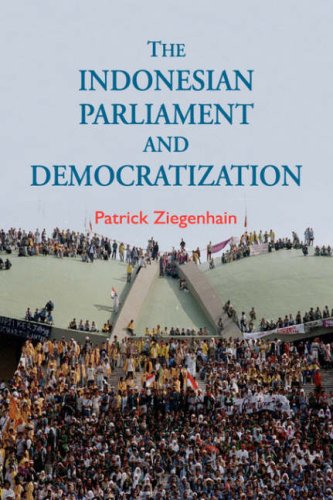Indonesian Government Structure
indonesian government
- The politics of Indonesia takes place in a framework of a presidential representative democratic republic, whereby the President of Indonesia is both head of state and head of government, and of a multi-party system. Executive power is exercised by the government.
- Indonesia (or), officially the Republic of Indonesia (Republik Indonesia), is a country in Southeast Asia and Oceania. Indonesia comprises 17,508 islands.
structure
- A building or other object constructed from several parts
- a thing constructed; a complex entity constructed of many parts; “the structure consisted of a series of arches”; “she wore her hair in an amazing construction of whirls and ribbons”
- the manner of construction of something and the arrangement of its parts; “artists must study the structure of the human body”; “the structure of the benzene molecule”
- The arrangement of and relations between the parts or elements of something complex
- The organization of a society or other group and the relations between its members, determining its working
- give a structure to; “I need to structure my days”

indonesian government structure – The Indonesian
The Indonesian Parliament and Democratization

Democratization in Indonesia has altered the political decision-making processes in many ways. It has also brought about tremendous change to the role of the Indonesian parliament in the country’s political system. Once characterized as a powerless rubber stamp, the parliament has developed into a comprehensive and more representative body able to fulfil its functions more adequately. In the literature on democratic transition, the impact of parliaments on regime changes and on the democratic reorganization of the most important state institutions and regulations is usually neglected. In the Indonesian case, however, the national parliament was one of the most decisive actors and is therefore the focus of this book. The author analyses the parliament’s contribution towards the process of democratization. Thus, this book contributes not only to research on the Indonesian democratization process, but also to the comparative research on parliaments in transition processes in general.
6
The Indonesian government gave the illegal inhabitants of Rawasari, central Jakara, a weekÕs notice to move to neighboring areas, but families and businesses decided to stay. In an impressive show of strength, hundreds of police and health officials stormed the area, clearing out the residents, with a steam shovel following closely behind to demolish every structure in sight.
The families living illegally in the hidden kampungs of Rawasari paid 200k-300k Rupiah (US $20-$30) to live behind the rattan and Chinese ceramic stores of their landlords. Ironically, the landlordsÕ businesses also are illegally located in Rawasari. Residents pulled together to remove their belongings in trash carts. The air was filled with the sound of the oncoming steam shovel tearing down blocks of illegal housing as residents scurried to dismantle their makeshift homes, saving the materials so they may be reused.
Jambatan Cincin
A leftover structure from the Dutch days. The aquaduct like structure is a rail bridge to transport rubber product from the rubber plantation….now nationalised by the Indonesian government. The location is now called Jati Nangor, Cileunyi, Bandung, Jabar. It is transformed into some institutional development and now a growing residential suburb of the Bandung City.
The foreground is the confinement and surround of Universitas Padjajaran, Bandung.
I was there for a short visit.
Hasselblad 500C, Carl Zeiss Planar *T 80mm F2.8, Kodak EKTAR100

indonesian government structure
This study deals with the political history of the Indonesian province of West Sumatra and the Minangkabau people from the late colonial period up to the present, focussing on the course and degree of their integration into the contemporary Indonesian state. The book provides a local perspective on the growth and development of the nationalist movement in Indonesia, the struggle for independence, and the trauma involved for West Sumatra in adapting to an Indonesian state based on very different concepts of government than those that animated the anticolonial struggle in the region. It also helps understand the backgrounds of the recent violent insurgence in several parts of the Indonesian archipelago against the rule of the Javanese-controlled central government.